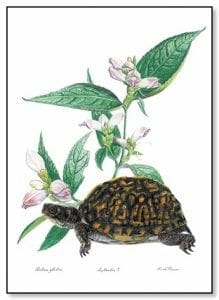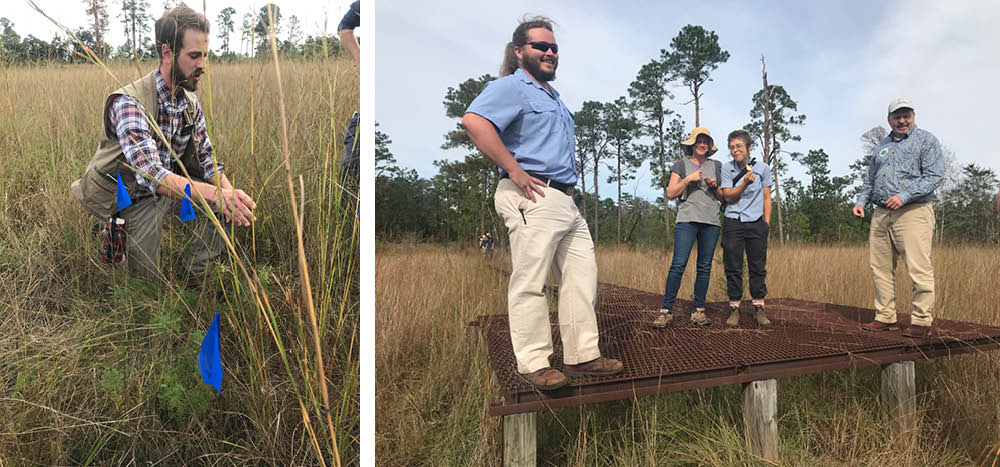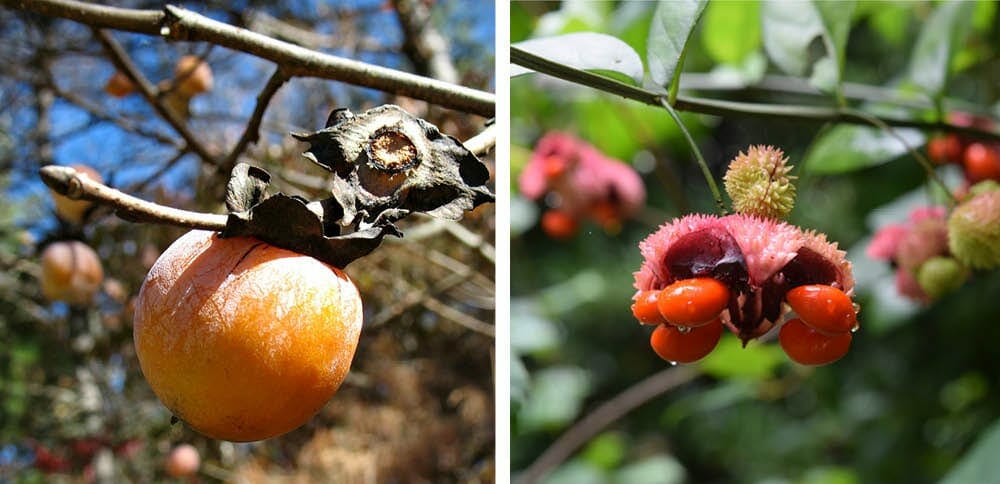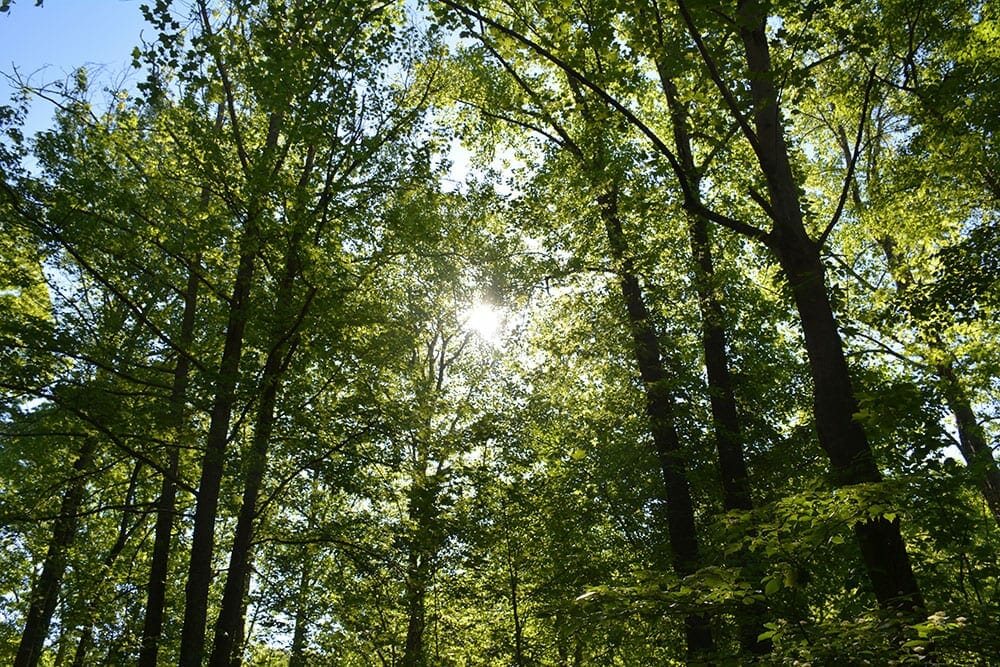President's Message
Thankful. Fall is finally here bringing cool respite and a chance to enjoy the beauty of our natural wild spaces. Through 25 years and thousands of volunteers, our organization’s goal has been to protect and cherish the natural beauty of the land we love – dedicated to building a strong community of native plant educators, conservationists, and protectors and remain committed to nurturing something bigger than each of us alone can ever be.
A State-Governance structure, in development since 2018, will empower our organization to expand further across Georgia's 159 counties filled with native plants yet to be discovered, rescued, nurtured, and protected. It will enable us enlighten minds, young and old, for what "native plant" truly means. Across the state, our chapters have all been a part of this arduous, but heartfelt process – discussing, planning, and building for this transition.
It’s time now to give thanks for what we have accomplished. To consider how GNPS will thrive, plan for the future and meet its goals. It’s also time for all of us to weigh in, ask questions, converse with other members, read the shared proposals and plans, and ultimately for all of us to make the strategic decision together with our vote.
Please consider attending our November meeting in Atlanta where important decisions will be made by you – the members. We'll also be voting on our Plant of the Year 2020. Our long-time member and illustrator extraordinaire, Linda Fraser, will be creating the artwork and which promises to be an outstanding commemoration for this 20-year old program.
Our Coastal Plains Chapter Business meeting will be November 16th and West Georgia in Carrollton will be December 10th. To learn more about our Strategic Plan, State Governance Structure, new By-Laws and our plans for expanding the chapters, please write to: strategic@gnps.org. New chapter interest meetings have already started near Augusta and this weekend in Dunwoody.
The benefits of building statewide chapters is illustrated on a Georgia farm where a chapter is currently forming and where “in the field” education is happening at a national level. The National Association of Conservation Districts and the Pollinator Partnership named Georgia’s Double Branches Farm and Produce Market as the 2019 recipients of the North American Pollinator Protection Campaign (NAPPC) U.S. Farmer-Rancher Pollinator Conservation Award. Well done, Lincoln County!
In addition to our 2020 Symposium, upcoming GNPS events include the Environmental Education Alliance of Georgia and Florida Native Plant Society state and regional conference. New developments are on the table with Continuing Education Credits for our programming, and new alliances with the Girl Scouts of America and Atlanta Audubon Society. Many more pathways lie ahead for extending the wisdom of our many great ecologists, botanists and naturalists.
It's been a great year and we have lots to be thankful for!
Most of all, thank YOU for being a part of this great organization. As my new license plate now says, “Go Wild’”!
Melanie Bass Pollard
GNPS President 2019
November Annual Business Meeting
Please join us for our Annual Business meeting on Tuesday, November 12, 2019 in Day Hall at the Atlanta Botanical Garden, starting at 7:00 p.m. with pre-meeting activities at 6:30 p.m. Linda Fraser will be our speaker for the event. As one of the original GNPS members, she’ll share some of her memories of our formation 25 years ago. She’ll also talk about her botanical illustration of the oakleaf hydrangea flower — it was used to form the GNPS logo. She’ll finish up with a bit about her beautiful artwork celebrating native plants and the critters that visit them.
 |
Read more about Linda at her website, see some of her artwork there (each one has a story!) and fall in love with these slices of Georgia flora and fauna like so many of us have over the last 25 years. (The photo at left is from Linda's website.)
Since it will be our annual business meeting, we will have a bit of business to cover. The Plant of the Year voting will wrap up that night, and if the vote isn’t a tie, we’ll announce the winner that night. In addition, we have new by-laws to approve. Members – you should have received emails recently about strategic planning, the transition to a state board, and the new by-laws. If you missed them, watch for all the relevant information coming to a web site link to be sent soon. |
Fun stuff: We’ll have some of the anniversary panels created from our 20th anniversary available for a walk down memory lane. We’ll also have a selection of retro t-shirts for sale at a retro price! Before we started putting the plant of the year on our t-shirts, we had shirts emblazoned with the GNPS logo on the front. They’ll be available in forest green (unisex sizes) and maroon (ladies cut) for the way-back price of $10. Only a limited quantity will be available so coming to the meeting will be your best chance to get one!
Best Field Practices for Conservation
Heather Brasell

Left: Padraic Elliott is shown here flagging plants of interest for research for short-term. Metal disks in the ground are used to relocate plants for long-term study. Right: Boardwalk allows access when the site is waterlogged. On the boardwalk – Houston Snead, Heather Alley, Rachel Smith, and Mincy Moffet.
I recently attended the Georgia Plant Conservation Alliance program held at the Jones Center at Ichauway. This meeting was a wonderful opportunity to get to know people from lots of organizations across Georgia (also representatives from Florida and Alabama) that are responsible for plant conservation and to learn more about plants that need conserving, conservation methods used, and projects underway to study and monitor threatened plants and critical habitats. The program included a field trip into a hydric flat.
One of the concerns addressed was poaching of native plants on both public and private lands. Plants collected for landscaping include orchids, carnivorous plants, azaleas, spring ephemerals, ferns, and mosses. Other plants are harvested for edible and medicinal uses. On my own property, we have been dealing with people poaching saw palmetto berries, used for herbal treatments for prostate problems. Apart from the potential damage to my property from harvesting and driving ATVs through the woods, the season for harvesting palmetto berries overlaps with the beginning of deer hunting season. I have visions of poachers hiding behind the bushes and hunters thinking they see a deer.
We may be unintentionally helping plant poachers. I have. When we see beautiful plants in the woods, we want to share our pleasure and passion with other people. Until recently, I didn’t realize that I have provided information on social media that could be used by poachers to locate plants of interest. I have posted photos of azaleas in the woods several times. I also posted photos of another plant with gorgeous flowers and later found that it may be either a plant of concern or even maybe a new species. I even described the habitat in terms that could be easily identified. If I had known it was a plant of interest and had been thinking about poachers, I’d have been a lot more careful about what I wrote.

Left: Conservationists gathered in small groups to identify plants and to discuss characteristics and conservation status. From left: Brandi Griffin, Lisa Giencke, Henning von Schmeling, Sarah Smith, and Marylou Moore. Right: Bags are used to prevent herbivory so seeds can be collected.
Here is the problem: unless we turn off the GPS locator on cell phones when we take photos that we later post on social media, tech-savvy people can examine the properties of the photo to find the exact location where the photo was taken. It is even easier for them if we take photos with identifiable landmarks (like water towers or bridges) in the background. And they do not even need to be clever if we describe the exact location.
What should we do? First, when we are in the field, we should turn off the GPS locator on our cell phones ("Location Services") and be sure to avoid taking photos where the location is identifiable. Second, when we are posting the photos, we should be careful not to provide information that indicates the location of the photo. Conservation protocols are to provide only county information for records of threatened and endangered plants. Even if plants are not threatened or endangered, they may be targets for commercial exploitation and poaching.
Plant Spotlight: Fall Fruit
Ellen Honeycutt

Left: Ediible fruit of persimmon (Diospyros virginiana). Right: Fruit capsule of hearts a bustin’ (Euonymus americanus).
Fall is often a time associated with nice foliage colors, but I like to also appreciate some of the fruit that ripens in the fall. Appearing now like plump and colorful jewels are the fruits of wild persimmon, beautyberry, hearts a bustin’, winterberry, and viburnums.
Persimmon (Diospyros virginiana) is a dioecious tree (having separate male and female flowers) that produces small, orange fruits in the fall. Unlike grocery store persimmons from Asia, these little fruits must fully ripen before being eaten or your mouth will pucker. I try to gather them soon after they naturally fall to the ground.
Beautyberry (Callicarpa americana) was profiled in the September newsletter, so check out that earlier article if you missed it. The purple fruits are looking great right now.
Hearts a bustin’ (Euonymus americanus) is a shade-tolerant shrub with modest flowers and foliage but a thoroughly impressive fall fruit. In plant identification forums, id of this plant is a top query in the fall. The raspberry-colored, warty fruit capsule cracks open to reveal 4 fleshy, orange seeds that dangle. The fruits are a favorite of cardinals.

Left: Winterberry (Ilex verticillata) fruit clusters. Right: Drupes of southern blackhaw (V. prunifolium).
Winterberry (Ilex verticillata) is one our deciduous holly shrubs, another dioecious species that fruits only on the female plant. Good pollination, thanks to hard-working bees and the presence of a nearby flowering male plant, results in bright red fruits clustered along the stem. Once the leaves drop, the effect of the bright fruit on the branches is stunning.
Viburnums (Viburnum sp.) are wonderful native shrubs and several have fruit ripening now: southern blackhaw (V. prunifolium) and rusty blackhaw (V. rufidulum) are two large ones (suitable as small trees in urban yards) while shade-tolerant mapleleaf viburnum (V. acerifolium) is suitable for part-shade hedges.
Other fruiting plants include chokeberry (Aronia), southern crabapple (Malus angustifolia), and hawthorns (Crataegus). Many of these produce more fruit as a result of good cross-pollination so try to have more than one even when male/female plants are not specified. While not all of these fruits are suitable for humans, they all nourish our native wildlife: birds, possums, raccoons, foxes, chipmunks, squirrels and others.
Chapter News: Redbud
Margaret Rasmussen

Tree canopy sequesters carbon dioxide emission from fossil fuel pollution and returns it to the atmosphere for humans to breathe.
Cold Facts on Hot Topic—Climate Change
When we explore the natural world around us, can climate change from global warming be denied? Scientific data tells the true story:
- Worldwide temperatures for the past five years 2015 to 2019 are the warmest in recorded history, — National Oceanic and Atmospheric Administration.
- Global temperatures are already 2 degrees F above pre-industrial times (1850-1900) — World Meteorological Organization/United Nations.
- Greenhouse gases from fossil fuel emissions at current levels could raise Earth’s global temperature 7 to 12.6 degrees F by 2100 if human beings do not reduce their energy consumption from fossil fuels — National Climate Assessment.

Recent speakers at Redbud Chapter programs have included Physical Scientist Dr. Rudi Kiefer (left) interpreting global warming impact on environment and Dr. James Porter on conservation efforts.
Recent programs of the Redbud Chapter of Georgia Native Plant Society have focused on the effects of global warming on the air, soil and water as they change the way we landscape with native plants:
- “Climate Change: What’s in Store?” by Dr. Rudi Kiefer, Brenau University professor of physical science
- “Georgia’s Pearly Eye Butterflies: Local Action Yields an Extraordinary Conservation Success” by Dr. James Porter, University of Georgia professor of ecology emeritus.
Trees, shrubs and herbs that have grown further south can now thrive further north in our landscapes and natural habitats because hardiness zones are changing due to climate change. Native plants that have thrived in warmer temperatures of lower hardiness zones beginning to grow further north in Georgia with the changes in sunlight, precipitation and soil type that result from climate change, according to the U.S. Department of Agriculture.

Left: The pearly-eye butterfly (Enodia portlandia) is distinguished by dark “eye” spots near the margins of its fore and high wings. Photo by James R. Holland, Bugwood.org, taken at Altama Plantation, Georgia. Right: Earth is an ocean planet with too little water in some places and way too much in others.
The phenomenon of global warming from fossil fuels generation spans the globe. “In a nutshell, the Earth is an ocean planet with too little water in some places, and way too much in others. Changes in precipitation greatly affect movement of water on the world’s continents,” Dr. Rudi Kiefer explains. As early as the 1980’s, Dr. Kiefer was studying global warming from a global perspective. He currently researches the relationship of carbon dioxide to soil and atmospheric conditions and how chemistry of acid rain affects human habitats, particularly their interaction with the environment of large cities.
Climate change affects pollination of flowering plants so they do not coincide with the life cycle and migration of pollinators that naturally propagate them. Reproductive cycles of insects and birds are disrupted as supporting plant life adapts to changing temperature, as described in a report from the National Oceanic and Atmospheric Administration.
Dr. James Porter has studied the three native species of pearly-eye butterfly from the UGA field station in Costa Rica to the north Georgia woodlands. His first hand observation of the pearly-eye butterfly Enodia portlandia in Georgia forests confirms that their habitat has evolved due to progressive occurrence of climate change. The butterflies can only survive in a narrow range of temperatures, so they move up from the lowlands to the mountain tops to escape rising temperatures in damp, wooded areas of the forest to feed on decaying fruit, animal flesh and sap of native plants.
A team of more than 300 experts produced the report of the National Climate Assessment, concluding that scientific data shows that emissions from fossil fuels are responsible for climate change of global warming, and human beings are largely responsible for energy consumption that causes this pollution. If human beings do not change their lifestyles of over consumption of energy from fossil fuels, greenhouse gases from fossil fuel emissions could raise Earth’s global temperature 7 to 12.6 degrees F by 2100.
So how can humans reduce their energy consumption of fossil fuels to save natural ecosystems and abate global warming?
- Encourage developers to maintain natural habitats, not clear cutting ecosystems. One acre of tree canopy can sequester carbon dioxide emissions from 26,000 vehicles driven in a year and returns it to the atmosphere as oxygen. Humans can breathe!
- Conserve energy by every means you can. Drive high mileage vehicles. Lower your thermostat in winter and raise it in summer.
- Wash clothes in cool water and turn off heat cycle in dishwashers.
- Encourage lawmakers to pass laws to conserve the environment.
Chalk Art Festival
Leslie Edwards

Left: The finished work of art. Right: Jenn Smith (left) with helper Cindy Reittinger during the production process.
GNPS participated in the Atlanta Audubon’s Chalk Art Festival on September 29, as part of “Georgia Grows Native for Birds Month.” The festival took place in Piedmont Park, near the Atlanta Audubon Exhibitat, which features a swift tower surrounded by a native plant meadow. Artist Jenn Smith drew a stunning design of a hummingbird pollinating coral honeysuckle, and volunteers filled in the design with temporary paint and chalk. Environmental organizations from across Atlanta participated in the festival, which was especially meaningful for GNPS because of the celebration of native plants, as well as being a lot of fun. A special thanks to Jenn!
|